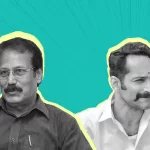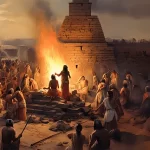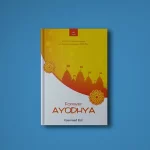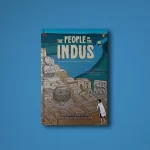Forever Ayodhya: An Objective Account Of The Struggle And Sacrifices
Forever Ayodhya. Koenraad Elst. Aryan Books International. Pages 337. Rs 995.
The Ayodhya temple liberation struggle began as a mass movement with sharp political implications in the late 1980s. It achieved its definitive victory with the Supreme Court verdict in 2019.
January of 2024 will see the realisation of the temple.
Arguably, the Ayodhya liberation movement stands as one of the largest democratic movements the modern world has ever witnessed. It was a unique phenomenon in that it reversed a monopolistic demolition and takeover of a ‘Pagan’ shrine.
Belgian Indologist Dr. Koenraad Elst has been a sympathetic fellow traveller in the campaign and also a foreign academic observer of it. He has defended the movement. He has criticised it. He has provided, most probably, the single-most comprehensive, objective portrayal of the movement in the academic and media circles he has access to.
Not that he cares, but he has paid dearly for doing that.
In 1991 Elst wrote, Ayodhya and After – issues before the Hindu society.
In 2002 he published, Ayodhya: the case against the temple.
In 2003 after the Archaeological Survey of India published its report on Ayodhya he wrote, Ayodhya the Finale.
Now he has come up with the book, Forever Ayodhya (Aryan International, 2023).
The 31 articles in 325 pages come from his various blog-posts, papers and lectures spread over a decade between 2012 and 2022.
Each of the articles in this book counters empty rhetoric with facts, hollow posturing with heartfelt logic, and political perversion with an empirically grounded vision. Elst shows, through his words, what the temple and the movement for the temple truly represent.
This book is a must-read not only for historians of India but also for every Hindu seeking to understand the ongoing civilisational battle in the country.
Highlights
In the third essay of the book, which was previously published in his Argumentative Hindu, Dr. Elst illustrates how a concocted ‘Mahatma formula’ for Ayodhya—a fabricated story used by some pro-temple advocates—inadvertently harmed the temple’s cause.
The hoax involving Ramgopal Pandey, a Hindu activist, and the false claim that Gandhi supported the return of demolished temples in 1937, was debunked later. However, in the days without internet or widespread fact-checking, the truth remained obscure.
Dr. Elst emphasizes the moral of the story thus:
So Pandey thought he was being clever with his concoction, but all he achieved was that his own followers were misinformed, not his opponents; and that one of these followers, in a high position where his failures would impact the Hindu interest in general, ended up repeating the concoction in good faith and getting rubbished as a forger and liar. A fine lesson for those Hindutva activists who think that accuracy is but a luxury for intellectuals and that lies can be a shortcut to political success.
Dr. Elst’s paper titled ‘Ayodhya’s Three History Debates’ is a thorough examination of the Ayodhya movement, presented at the 2011 ‘Torchinov Orientalist Conference.’ It offers an all-encompassing history of the movement, providing valuable insights into its development.
Another significant article by Dr. Elst is titled ‘Dr. Llewelyn Moran: Another Hinduphobic from Oxford?’. Written in 2012, this piece exposes how academics often embrace the anti-Hindu arguments put forth by predominantly Marxist historians, incorporating them into their worldviews without critical examination.
It serves as a cautionary message to Hindus about the gravity of the battle they are engaged in within the academic domain, which significantly influences the minds of future generations.
The book also places Ayodhya within the broader context of temple destruction as an act of civilizational and religious aggression. Dr. Elst meticulously exposes the deceptive tactics used by Marxist historians, ranging from Romila Thapar to Dr. D.N. Jha, who present half-truths to construct whole lies in an attempt to justify temple destructions.
One specific article, titled “‘An ‘Eminent Historian’ attacks Arun Shourie’” (pp.79-91), illustrates how D.N. Jha utilised a miracle story from a Tibetan tradition to falsely attribute the burning of Nalanda to two mendicants.
Dr. Elst approaches this subject with surgical precision, meticulously detailing how Marxist historiography in the public sphere can turn a dry straw into a thriving pasture through their manipulative narratives.
Here, let me share another historical fact. In the 13th century, there was a Tibetan monk and pilgrim named Dharmasvamin, who traveled to India and stayed in Nalanda around the time it was attacked.
His autobiography adds an important perspective to the overall narrative. When the Islamist army attacked Odantapuri Vihara and Library, which was located just a day’s travel away from Nalanda, they captured a Brahmin named Jayadeva and his family. Jayadeva was a well-known benefactor of Nalanda University.
During his captivity, Jayadeva risked his life and managed to send a secret message to the head of Nalanda, Rahulasribadra, warning of the impending attack on Nalanda.
Despite attempts by Marxist historians to create a narrative of Brahmin-Buddhist antagonism, the truth is very different.
In 2018, Elst wrote a detailed encyclopedia entry for the Encyclopedia of Indian Religions: Hinduism and Tribal Religions (Ed. Pankaj Jain et al., Springer). For any Hindu who wishes to understand the complex history of Ayodhya in a comprehensive and objective manner, this entry (pp.152-167) is a must-read.
Despite his exemplary scholarship, Elst has a weakness. He is bitter about the Sangh and more often than not underestimates their contribution to the Ayodhya debate.
It is only reluctantly that he acknowledges the vital contribution of archaeologist S.P.Gupta and never fails to mention that Gupta was the only Sangh person who contributed to the evidence.
While acknowledging the monumental contribution of Sita Ram Goel in contextualizing the larger core issue of temple destruction and its theological kernel, one must also recognise the tough battle fought by the Sangh and its aligned organizations.
Unfortunately obscurantist elements have been piggy-backing on this Elst-Goel aversion for Sangh to further their own agenda.
For a man who has been a personification of academic rigour and objectivity and who has sacrificed his own career for giving voice to the Hindu cause, this prejudice that he harbours is too small a flaw to even mention. But it is a bit jarring in the rhythm of his entire work.
Equally, the Sangh and its Parivar should understand that the works and contributions of Elst are far greater than this aspect of his, which also has some valid points to it.
The book is dedicated to Kothari brothers – Sharad Kumar Kothari and Ram Kumar Kothari. They are the symbols of the sacrifice of karsevaks who gave their all for Sri Rama and for Dharma.
As the Sri Ram Janmabhoomi temple nears completion, it becomes essential to remember the sacrifice of the karsevaks and honor their memory. We can never fully repay them and their families for their sacrifice, but it is a sacred act of gratitude that we must undertake.
Likewise, we must express our gratitude to Dr Elst for raising awareness about the debt that Hindus owe to the karsevaks.
Every Hindu who seeks to comprehend their history, current politics, and the intellectual defence and fight for Dharma should consider this book as essential textbook material.
This is a book that presents what Ayodhya stands for in both the Indian context and in the international context of Hindus as the last standing Pagan civilisation.





